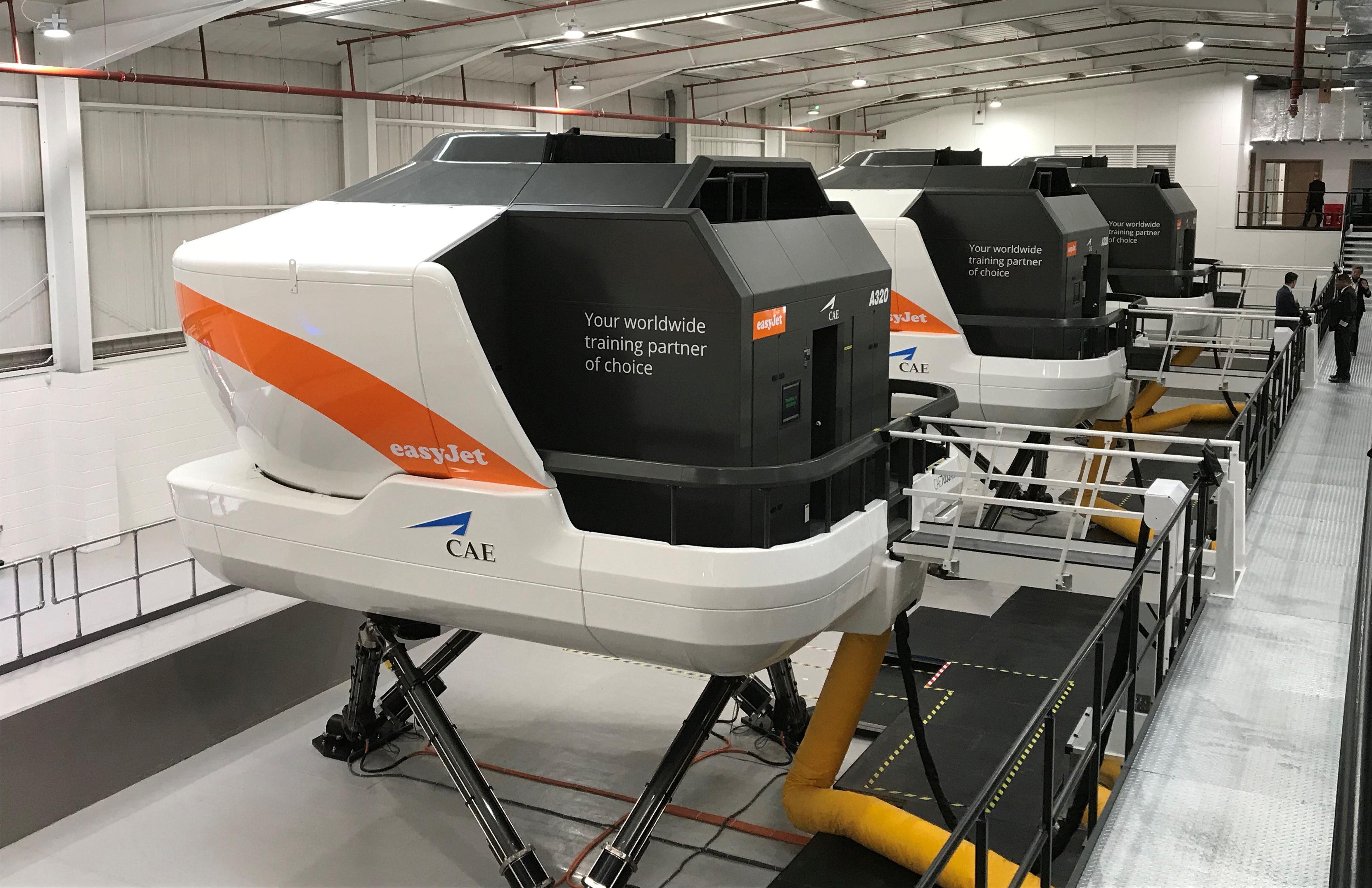
Training and simulation provider CAE believes it has plumbed the depths of the business decline it has experienced from the coronavirus pandemic, which has forced the company to suspend operations at one-third of its global training sites, interrupt manufacturing operations and furlough employees.
“In terms of seeing a bottom I think we’ve seen it,” CAE president and CEO Marc Parent told analysts May 22 during a fiscal 2020 earnings call.
“We still have a number of our training centers closed and a lot of them are still operating on limited utilization,” Parent said. “Because of the travel restrictions, pilots that would have otherwise needed to conduct recurrent training because they are running into their six- or nine-month expiry of their certifications, physically couldn’t get to the training centers.”
Once restrictions imposed during the pandemic are eased, Parent expects CAE’s training network to gradually return to fuller utilization by airlines.
“I’m pretty sure there will be a lot of pent-up demand, and that demand will probably initially be toward narrowbody aircraft. A great majority of the assets in our training network are geared toward narrowbodies so that could be disproportionally better for us as the recovery occurs ... In large part, those training centers should be back online in June.”
The coronavirus pandemic started affecting CAE’s civil training revenues during its fiscal fourth quarter, especially in March, as a result of reduced training demand and government travel bans, lockdown measures other restrictions. During March, 19 of the company’s 60 civil training locations suspended operations and 10 others remained open, but at reduced capacity.
“Civil saw a significant decrease in demand as a result of the reduction in airline and business aircraft operations globally and the disruption to the global air transportation environment itself,” Parent said. “In addition to disruptions to our global training network, we also had to suspend the installation and delivery of civil simulator products and under local public directives, our Montreal manufacturing plant suspended manufacturing of civil simulators during the last week of March.”
On April 6, CAE said it had furloughed, or temporarily laid off, 2,600 of its 10,500 employees and placed another 900 employees on a reduced work week to help manage a slowdown in training activities. Three weeks later, the company announced that it had recalled laid-off workers in Canada—about 1,500 employees—through the Canada Emergency Work Wage Subsidy program.
For the year, CAE delivered 56 full-flight simulators (FFS), two less than in 2019. It delivered 21 FFS in the fourth quarter (Q4), four less than in Q4 2019.
CAE reported fiscal fourth quarter revenue of C$977.3 million ($699 million), down 4% from the fourth quarter last year, and annual revenue of C$3.6 billion, up 10% over fiscal 2019.
Annual net income was C$311.4 million ($1.16 per share) compared to $330 million ($1.23 per share) last year.
CAE’s civil aviation segment annual revenue increased 16% to C$2.17 billion; fourth quarter revenue was “stable” at C$602 million, up 1%. The segment booked C$2.5 billion in orders during the year, including for airline training outsourcing and 49 FFS sales. Backlog at the end of the year was C$5.3 billion.
Airlines acquiring FFS and long-term training agreements included LATAM, JetSmart Airlines and Sunwing Airlines. Business aviation customers signing long-term training contracts included TAG Aviation Holdings, JetSuite, Solairus Aviation and Flightworks.
The company closed its acquisition of the Bombardier Business Aircraft training network in March 2019 for U.S. $645 million, its largest-ever purchase.
CAE’s defense and security segment was also affected by the pandemic, seeing its fiscal fourth quarter revenue drop by 12% from the previous fourth quarter to C$342 million. Contributing to the slump were “delays due to travel bans, border restrictions, client access restrictions and supply chain disruptions,” CAE said. Annual segment revenue increased by 2% to C$1.3 billion.
The defense segment booked C$1.2 billion in orders for the year. These included a contract with Lockheed Martin to support the design and manufacture of additional C-130J simulators and training devices for the U.S. Air Force and Marine Corps.; contract extensions for U.S. Air Force KC-135 aircrew training and simulator upgrades; and a NATO Support and Procurement Agency contract to provide the German Navy with a training system for the NH90 Sea Lion helicopter.






Comments